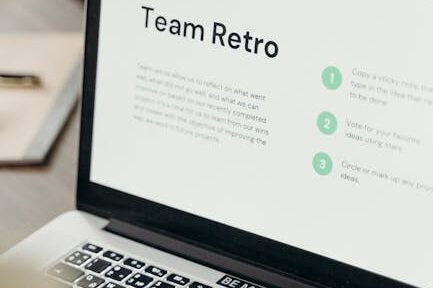6 Steps of the Employee Selection Process: How to Attract and Hire Top Talent
Employees are a company’s most valuable asset. Hiring the right people requires more than judging qualifications on paper; it demands a deliberate employee selection process that identifies candidates who match your skills needs, organizational values, and long-term goals. This guide outlines six practical steps to build a reliable candidate selection workflow, reduce turnover, and boost productivity.
What are the six steps in the employee selection process?
Below is a concise overview of the six stages we’ll explore in depth:
- 1. Job analysis and role definition
- 2. Sourcing and attraction
- 3. Application screening and shortlisting
- 4. Interviews and candidate assessment
- 5. Reference checks and background verification
- 6. Offer, negotiation, and onboarding
Step 1: Conduct a rigorous job analysis and create a precise job description
A successful employee selection process starts with clarity. A job analysis identifies core responsibilities, required competencies, performance expectations, and environmental factors for the role. Use this information to craft a job description that attracts the right candidates and sets clear expectations.
Elements to include in a job description:
- Role purpose and primary responsibilities
- Required skills, qualifications, and certifications
- Key performance indicators and success metrics
- Reporting structure and team context
- Location, working hours, and any flexibility offered
For teams refining job analysis techniques, consider our guide on Mastering Job Analysis: A Key to Effective Talent Management to align role profiles with organizational objectives.
Step 2: Source and attract qualified candidates
Once the job description is set, target the right talent pools. A multi-channel sourcing approach improves candidate quality and diversity.
Common sourcing channels:
- Company careers page and employer branding content
- Job boards and industry-specific forums
- Professional networks and social recruiting (LinkedIn, industry groups)
- Employee referrals and internal talent mobility
- Recruitment agencies and targeted outreach
Well-crafted job postings should be clear, concise, and inclusive. Aim to communicate not only role requirements but also company culture, career growth opportunities, and core values. This helps attract candidates whose motivations align with your organization—reducing the risk of mismatch later.
Step 3: Screen applications and shortlist candidates
Screening separates qualified candidates from the broader applicant pool. A structured screening process reduces bias and improves consistency.
Best practices for effective screening
- Define objective screening criteria based on the job analysis.
- Use standardized resume checklists to evaluate experience and skills.
- Incorporate brief pre-screening calls to verify fit and motivation.
- Consider short work samples or screening tasks that reflect job realities.
Remember: the screening phase is intentionally selective. You may pass over promising individuals who don’t match the role’s specific needs. That selectivity protects team productivity and cultural fit.
Step 4: Interviewing and candidate assessment
Interviews and assessments let you evaluate qualifications, cognitive abilities, behavioral traits, and cultural alignment. Combining multiple evaluation methods creates a fuller picture of each candidate.
Types of interviews and questions
- Structured behavioral interviews (STAR-format) to probe past performance
- Technical or role-specific interviews to validate skill levels
- Panel interviews to gather cross-functional perspectives
- Situational interview questions that reveal problem-solving approach
Example question categories:
- Behavioral: “Tell me about a time you handled a tight deadline.”
- Situational: “How would you prioritize conflicting stakeholder requests?”
- Technical: “Walk me through how you would debug this problem.”
- Culture fit: “What type of management style helps you thrive?”
Assessment methods to complement interviews
- Work samples or job-relevant assignments
- Cognitive ability tests and situational judgment tests
- Personality or behavioral assessments to understand working style
- Trial projects or paid short-term engagements for critical hires
Using varied assessment formats—beyond resumes and interviews—reduces hiring risk and helps you evaluate practical performance under realistic conditions.
Step 5: Reference checks and background verification
Reference checks and background screenings validate claims and uncover potential red flags. When conducted professionally, they add a final layer of assurance before a hiring decision.
What to verify during checks:
- Employment dates, role, and responsibilities
- Performance strengths and areas for improvement
- Reason for leaving and rehire eligibility
- Relevant certifications or educational credentials
Ensure your process complies with local laws and privacy regulations. Transparent communication with candidates about background checks improves trust and the candidate experience.
Step 6: Select, extend an offer, and onboard effectively
Selection culminates in extending a competitive offer, negotiating where appropriate, and launching a structured onboarding experience that speeds up time-to-productivity.
Offer and negotiation tips
- Be clear about compensation, benefits, reporting lines, and expectations.
- Know your budget and the market pay range for the role.
- Consider non-monetary incentives—flexible work, professional development, or career pathways.
Onboarding to retain and engage
An optimized onboarding plan integrates the new hire into the team, clarifies early goals, and sets the tone for retention. For practical onboarding templates and welcome messaging, see our post on Crafting Effective Welcome Messages for New Employees.
Common mistakes to avoid in the selection process
Even experienced hiring teams can fall into traps that lead to poor hires. Avoid these pitfalls:
- Skipping job analysis and using vague role descriptions.
- Relying solely on resumes without practical assessments.
- Allowing unconscious bias to shape screening and interviews.
- Poor communication that creates a negative candidate experience.
- Rushing onboarding or failing to set clear early milestones.
How to optimize your hiring workflow for better outcomes
Refining the employee selection process is an ongoing exercise. Use these strategies to boost effectiveness and align hiring with broader workforce goals:
- Standardize evaluation rubrics to compare candidates objectively.
- Incorporate role-based assessments that mirror actual job tasks.
- Train hiring managers on structured interviewing and bias mitigation.
- Track hiring metrics—time-to-fill, quality-of-hire, and early turnover—to refine your process.
- Leverage internal mobility to promote from within when appropriate.
For teams balancing hiring with operational demands, integrating selection strategy with broader HR systems enhances workforce planning. See our guide on Mastering Workforce Management for Business Success for tactics to align recruitment with capacity planning and productivity goals.
Frequently asked question: How do I choose the best candidate from a shortlist?
Choose the best candidate by combining objective data (assessment scores, skills tests) with calibrated subjective input (structured interview ratings). Prioritize candidates who demonstrate both technical competence and alignment with company values. Use reference checks to confirm performance and onboarding readiness before finalizing the offer.
Final checklist before making a hiring decision
- Have you matched candidate skills to the job analysis?
- Did every shortlisted candidate complete a consistent assessment?
- Have references and necessary background checks been completed?
- Is the offer competitive and aligned with budget and policy?
- Is an onboarding plan ready to accelerate new-hire integration?
Conclusion and next steps
There is no perfect candidate for every company, but a disciplined employee selection process dramatically increases the likelihood of hiring the right person for each role. By investing time in job analysis, sourcing, structured screening, multi-method assessments, verification, and thoughtful onboarding, your organization will reduce turnover, strengthen culture, and improve performance.
Ready to transform your hiring outcomes? Start by auditing your current selection workflow against the six steps outlined above, standardizing evaluation criteria, and equipping hiring managers with the tools to assess both skill and fit.
Call to action: Want help optimizing your selection process? Contact Tempus Tact for tailored HR strategies and practical templates to hire better, faster, and fairer—get started today.





